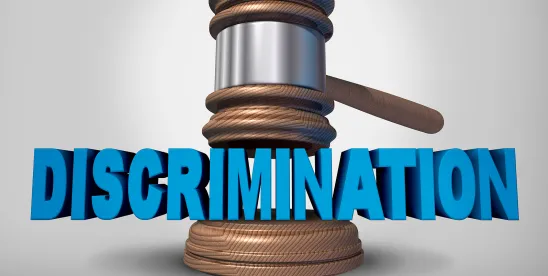Writing for a unanimous Court, Justice Ketanji Brown Jackson states that Title VII does not require a plaintiff who is a member of a “majority” group to present “additional background circumstances” as the lower court had held.
In Ames v. Ohio Department of Youth Services, petitioner Marlean Ames (“Ames”), a heterosexual woman, claimed that her employer, the Ohio Department of Youth Services, had passed her over for a promotion in favor of a less qualified gay woman. Soon after that, Ames claimed, the Department of Youth Services demoted Ames (and cut her pay) so that a gay man could fill the position rendered vacant by her demotion.
Ames brought suit under Title VII claiming that the Ohio Department of Youth Services had discriminated against her because of her sexual orientation. The District Court granted the Ohio Department of Youth Services summary judgment on the grounds that Ames failed to make a prima facie case of discrimination because “she had not presented evidence of [sufficient] background circumstances.” The lower court had found that, as a member of the “majority group,” i.e., heterosexuals, Ames needed to present evidence of “background circumstances” (referred to by the Court as the “background circumstances rule”) to establish that the defendant was the rare employer that would discriminate against the “majority” group.
The Sixth Circuit affirmed the District Court’s grant of Summary Judgment and approved its use of the background circumstances rule, reasoning that “Ames, as a straight woman” needed to present evidence that either “a member of the relevant minority group” (in this instance, a gay person) had made the employment decision at issue or, with statistical evidence show a pattern of discrimination against members of the majority group.”
In a compact decision, the Supreme Court unanimously rejected the Sixth Circuit’s application of the background circumstances rule and held that Ames and other litigants from a “majority group” are not required to present the additional evidence of background circumstances in order to make a prima facie case of discrimination under Title VII. Citing to the text of Title VII, the Court found that the statute draws no distinction between majority group plaintiffs and minority group plaintiffs. In short, any requirement that majority group plaintiffs must produce specific types of evidence over and above what is required from minority group plaintiffs, is improper.
A Foreshadowing of Further Changes to Title VII Litigation?
It bears noting that, in a concurring opinion joined by Justice Gorsuch, Justice Thomas wrote to lament the creation of “Judge made doctrines” (such as the background circumstances rule). Justice Thomas went on to note that, “[a]s with the background circumstances rule, the McDonnell Douglas framework lacks any basis in the text of Title VII and has proved difficult for courts to apply. In a case where the parties ask us to do so, I would be willing to consider whether the McDonnell Douglas framework is a workable and useful evidentiary tool.” Thus, it seems that there is a cohort on the Court that is ready to review, and possibly overturn, the McDonnell Douglas framework – the familiar and longstanding bedrock of employment law used daily to analyze discrimination claims brought under Title VII.
The EEOC Cheers and Reinforces its Commitment to Combatting DEI
Relatedly, soon after the Court rendered the Ames decision, the Equal Employment Opportunity Commission’s Acting Chair Andrea Lucas issued a statement “applaud[ing]” the Supreme Court’s ruling, noting that the Court “resoundingly dispelled the common misnomer of ‘reverse’ discrimination, making clear that discrimination on the basis of a protected characteristic is unlawful…no matter the identity of who engaged in the discrimination or which workers were harmed or benefited.” She went on to state, “under my leadership, the EEOC is committed to dismantling identity politics that have plagued our employment civil rights laws…” Warning that employers will no longer be shielded “from any race or sex discrimination that may arise from [their] DEI initiatives,” Lucas urged that “[t]houghtful employers will take note and review their policies to ensure compliance with Title VII.”
Concluding with statements linking to previously issued documents about DEI-Related discrimination, Acting Chair Lucas further advised that: “the EEOC stands ready to help employers comply with their obligations not to discriminate. But, where necessary, the agency also is prepared to root out discrimination where it remains entrenched.”
***
In sum, the Ames decision may not have much immediate impact outside of the few circuits that followed the background circumstances rule—e.g., the U.S. Courts of Appeals for the Sixth, Seventh, Eighth, Tenth and District of Columbia Circuits. In those jurisdictions, plaintiffs who fall into a “majority group” will no longer have to meet a higher standard to maintain discrimination claims under Title VII. Employers in those circuits should be aware of this development when evaluating the potential risks associated with so-called “reverse discrimination” claims.
Employers everywhere should note the EEOC’s continued focus on DEI initiatives as a potential vehicle for unlawful discrimination.





 />i
/>i

